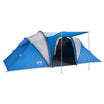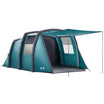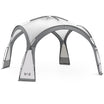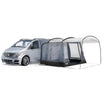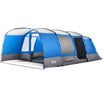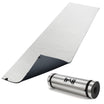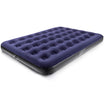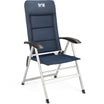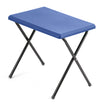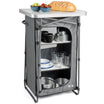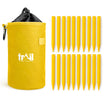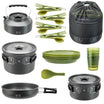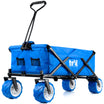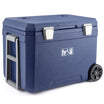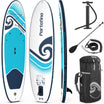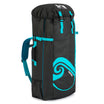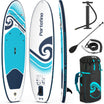When venturing into the great outdoors, ensuring comfort and hygiene is paramount. A portable camping toilet, such as our 10L and 20L Camping Toilets, provides a convenient solution. This guide delves into the workings of these toilets and offers essential maintenance tips to keep them in optimal condition.
How Portable Camping Toilets Work
Portable camping toilets are designed to replicate the experience of a standard household toilet while being mobile and self-contained. They typically consist of two main sections:
Upper Section (Freshwater Tank and Seat):

Freshwater Tank: Holds clean water used for flushing. Both our toilets have a 10L capacity ready. This tan can be removed for easy filling.
Seat and Lid: Provides a comfortable place to sit, similar to a regular toilet.
Flushing Mechanism: Trail camping toilets have an air pressure pump – simply press down to flush!
Lower Section (Waste Holding Tank):

Waste Tank: Collects and stores waste until it can be properly disposed of. This tank is fully detachable from the top section, with a leakproof seal and large screw cap for easy emptying.
Sealed Valve: Separates the waste tank from the bowl to prevent odours from escaping. Our toilets use a double seal blade valve - Simply pull the T-lever to open the valve, then push it back to close the valve once you've finished your business.
When you flush, water from the freshwater tank rinses the bowl, and waste is deposited into the sealed waste holding tank. This design ensures that odours are minimised, and the toilet remains hygienic during use.
Maintenance Tips for Your Portable Camping Toilet
Proper care and maintenance are crucial to extend the lifespan of your portable toilet and ensure a pleasant experience. Here are some essential tips:
Regular Cleaning:
After Each Trip: Empty the waste holding tank at designated disposal sites. Thoroughly clean and dry before storage - wash with mild soap and water.
Deep Cleaning: Periodically, use a mild, non-abrasive cleaner to scrub both the interior and exterior surfaces. White vinegar can be effective in breaking down residues and neutralising odours.
Use Appropriate Chemicals:
Deodorising Agents: Add chemicals specifically designed for portable toilets to the waste tank. These agents help break down waste and control odours.
Avoid Harsh Chemicals: Do NOT use bleach, acids, solvents or abrasive cleaners as these may damage the seals and can also harm the environment.
Seal and Valve Maintenance:
Lubrication: Periodically lubricate seals and valves using silicone lubricant to ensure they function correctly and prevent leaks.
Inspection: Check for any signs of wear or damage and replace parts as necessary to maintain a tight seal.
Safe Storage: Loosen all caps and open blade valve before long term storage; remember to close and tighten again before use.
Safe Travel: To avoid leakage, do not travel with the holding tank more than 3/4 full, or with the flushing (top) tank more than half full.
Use Biodegradable Bags (Optional):
For added convenience, especially in areas without disposal facilities, consider lining the waste tank with biodegradable bags. This practice simplifies waste disposal and keeps the tank cleaner.
By understanding the functionality of your portable camping toilet and adhering to these maintenance practices, you can ensure a hygienic and comfortable experience on all your outdoor adventures. Regular care not only enhances performance but also extends the life of your equipment, making it a reliable companion for years to come.

